External Qigong (??) vs. Internal Qigong (??)
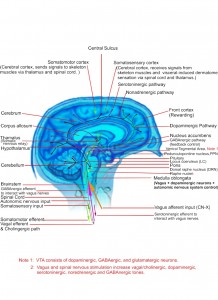
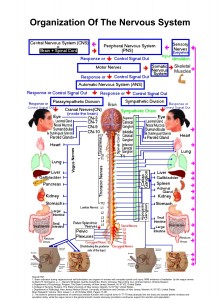 External Qigong (??):
External Qigong (??):
Using the skeletal muscle to generate sensory nervous pulses to the cerebellum, the hypothalamus, the thalamus, and the cerebral cortex via the somatic, parasympathetic and sympathetic nerves is called External Qigong(??). Besides the direct linking to the cerebellum, the thalamus, and the cerebral cortex, the somatic nervous sensor couples the stimulating signal to the parasympathetic and sympathetic nerves via the reflex arc of an interneuron synapse in the spinal cord disc. It is a reversal dermatome reflex: somatic sensor (in the dermatome zone) => interneuron synapse => parasympathetic or/and sympathetic nerves => hypothalamus. Thus, the external Qigong can alternate the visceral function, as well. When you massaging your dermatome reflex zones, your visceral organs will get noticed.
For example, massaging your belly will improve your digestive/intestine function.
https://en.wikipedia.org/wiki/Dermatome_(anatomy)#/media/File:1506_Referred_Pain_Chart.jpg
https://en.wikipedia.org/wiki/Dermatome_(anatomy)
Internal Qigong (??):
Using the smoothing muscle of visceral organs to generate sensory nervous pulses to the thalamus and hypothalamus via the vagus, parasympathetic and sympathetic nerves is called Internal Qigong (??). The main benefit of the Internal Qigong is a result of vagus nerve stimulation (VNS)without an external electric stimulation device – https://en.wikipedia.org/wiki/Vagus_nerve_stimulation
We use the pelvic organs, including the bladder, urogenital, and upper-anal/rectal smooth muscles to do VNS jobs. This means the dopamine-thalamus-hypothalamus-pituitary axis is activated by the vagus nerve sensors in the pelvic organs.
The bioelectric pulses are generated by piezoelectric effects of biomass such as bones, tendons, ligaments muscles, nerves and blood vessels, or by the mechanosensory, ligand-gated, and cyclic nucleotide-gated ion channels in the biomass.
You can use somatic motor nerves to stretch/contract/expand/bend the skeletal muscles for massaging (stretching/contracting/expanding/bending) visceral organs in the body cavity to do both internal and external Qigoing together.
You can stretch/contract/expand/bend skeletal muscles of the thoracic, abdominal and pelvic cavity to generate bioelectricity. If you do it properly, you can get a major vagus/parasympathetic nervous stimulation with a minor sympathetic nervous stimulation from the cyclic stretching of epithelial Cells in the linings of the body Cavities and the visceral organ surface.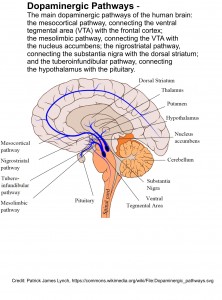
For examples:
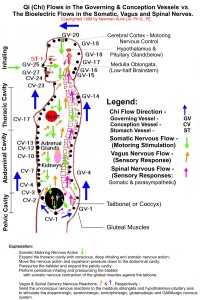 Please also refere to https://en.wikipedia.org/wiki/Body_cavity#/media/File:Scheme_body_cavities-en.svg
Please also refere to https://en.wikipedia.org/wiki/Body_cavity#/media/File:Scheme_body_cavities-en.svg
1. Thoracic breathing, also known as shallow breathing is likely to stimulate the sympathetic nerves in the heart and lungs without expanding the chest cage which can not be expanded or compressed unless doing Cardiopulmonary resuscitation (CPR) for vagus nerve stimulation. Qigong breathing won’t include the thoracic breathing.
2. Abdominal breathing is to stimulated the vagus and sympathetic nerve in the abdominal cavity. The visceral organs includes the stomach, liver, pancreas, gallbladder, small intestine, large intestine, appendix, colon, kidneys and adrenal glands. The abdominal organs form an bioelectric power house. Abdominal-expansion breathing is likely to dominantly stimulate the vagus nerve, while the abdominal-compression breathing is dominantly stimulate the sympathetic nerve. My Aquila Anal Breathing Qigong (more information in http://action.love/WordPress/2014/09/22/qi-the-civil-electric-and-material-engineering-excellence-for-human-body/ ; http://action.love/WordPress/2014/08/29/aquali-anal-breathing-qigong-induced-erection/ ) adopts the abdominal-expansion inhaling (breathing) with a natural exhaling release, in contract to the Kundalini’s the abdominal-compression breathing as shown in https://www.youtube.com/watch?v=ZBjnograjq4 and as described in https://en.wikipedia.org/wiki/Kundalini
3. Low-abdominal and Pelvic Breathing: The Aquila Anal Breathing Qigong moves the abdominal expansion force to pump the low-abdominal/pelvic cavity (also known as “Sins Qi into DanTien”) , with the pelvic muscle stretching, and a simultaneous anal/gluteus muscle contraction (or followed by a simultanoeus anal/gluteus muscle contraction) to generate Qi (bioelectricity) to stimulate the thalamus and the hypothalamus-pituitary axis for the dopamine, oxytocinergic and NOergic nervous activation and then cyclic nucleotide-gated ion channel activation.
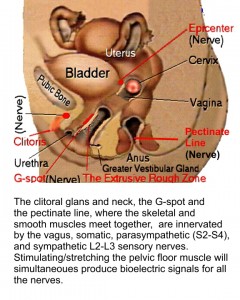 https://bea-skincare.com/wp/buy-valtrex-online/ genital-anus” width=”240″ height=”300″ />The somatic low-abdominal/pelvic muscle supports the smooth muscles and internal organs in the pelvic cavity – urogenital and rectum. The outer section (first 1/2 – 1 inches) of urogenital and anus is mainly the somatic skeletal muscle. The female G-spot and glans clitoral neck, as well as the glans penis neck and the pectinate line (dentate line) of the anus, are the area (zone) composed of mixed sensors – somatic, vagus, parasympathetic S2-S4 and sympathetic L2-L3, where the skeletal muscle joins the smooth muscle. The somatic sensory nerve is distributed over the shallow, skeletal tissue, while the vagus, parasympathetic and sympathetic sensory nerves are inside the smooth muscle. The genital vagus nerve alone, which bypasses the spinal cord, can trigger orgasm in response to vaginal-cervical stimulation ( http://action.love/download/brainresearch04.pdf .)
https://bea-skincare.com/wp/buy-valtrex-online/ genital-anus” width=”240″ height=”300″ />The somatic low-abdominal/pelvic muscle supports the smooth muscles and internal organs in the pelvic cavity – urogenital and rectum. The outer section (first 1/2 – 1 inches) of urogenital and anus is mainly the somatic skeletal muscle. The female G-spot and glans clitoral neck, as well as the glans penis neck and the pectinate line (dentate line) of the anus, are the area (zone) composed of mixed sensors – somatic, vagus, parasympathetic S2-S4 and sympathetic L2-L3, where the skeletal muscle joins the smooth muscle. The somatic sensory nerve is distributed over the shallow, skeletal tissue, while the vagus, parasympathetic and sympathetic sensory nerves are inside the smooth muscle. The genital vagus nerve alone, which bypasses the spinal cord, can trigger orgasm in response to vaginal-cervical stimulation ( http://action.love/download/brainresearch04.pdf .)
The deep vaginal stimulation on a spot between the bladder and cervix, known as the Epicenter in my book “Resonant Excitation Of Sexual Orgasm”, as shown above, is indeed a vagus nerve stimulation. I used “Epicenter” for this spot is due to the nature of orgasm like a sequence of internal shake waves generated at this spot. The orgasm is like an volcano eruption from here. Recently published research papers termed it as vaginocervical stimulation (VCS): for examples,
1. http://www.ncbi.nlm.nih.gov/pubmed/20806326
2. http://www.ncbi.nlm.nih.gov/pubmed/12914587
3. http://www.ncbi.nlm.nih.gov/pubmed/15451368,
4. http://www.ncbi.nlm.nih.gov/pubmed/8720868,
5. http://www.ncbi.nlm.nih.gov/pubmed/11306012,
6. http://www.ncbi.nlm.nih.gov/pubmed/20453158,
7. http://www.ncbi.nlm.nih.gov/pubmed/1801015,
8. http://www.ncbi.nlm.nih.gov/pubmed/8153185,
9. http://citeseerx.ist.psu.edu/viewdoc/download?doi=10.1.1.177.782&rep=rep1&type=pdf
Stimulation on the deep clitoral bulb and urethra, likely reaching the bladder, can also activate the local vagus nerve sensor.
(References:
1. http://www.ncbi.nlm.nih.gov/pubmed/26452068,
2. http://www.ncbi.nlm.nih.gov/pmc/articles/PMC1283096/pdf/nihms3946.pdf,
3. http://www.ncbi.nlm.nih.gov/pubmed/25855310
4. http://www.ncbi.nlm.nih.gov/pmc/articles/PMC3090744/pdf/nihms271602.pdf
5. http://onlinelibrary.wiley.com/doi/10.1113/expphysiol.1989.sp003296/pdf
6. http://www.ncbi.nlm.nih.gov/pubmed/26452068?dopt=Abstract
7. Herrity AN, Rau KK, Petruska JC, Stirling DP, and Hubscher CH., “Identification of bladder and colon afferents in the nodose ganglia of male rats.” J Comp Neurol. 2014 Nov 1;522(16):3667-82. doi: 10.1002/cne.23629. Epub 2014 Jun 16. http://www.ncbi.nlm.nih.gov/pubmed/24845615
8. Rozman J, and Bunc M., “Modulation of visceral function by selective stimulation of the left vagus nerve in dogs.” Exp Physiol. 2004 Nov;89(6):717-25. Epub 2004 Sep 13. http://www.ncbi.nlm.nih.gov/pubmed/15364877
9. Kaddumi EG, and Hubscher CH, “Convergence of multiple pelvic organ inputs in the rat rostral medulla.” J Physiol. 2006 Apr 15;572(Pt 2):393-405. Epub 2006 Feb 2. http://www.ncbi.nlm.nih.gov/pmc/articles/PMC1779668/
10. Giuliano F1, Rampin O, and Allard J., “Neurophysiology and pharmacology of female genital sexual response.” J Sex Marital Ther. 2002;28 Suppl 1:101-21. http://www.ncbi.nlm.nih.gov/pubmed/11898692
11. Komisaruk BR, and Whipple B., “Functional MRI of the brain during orgasm in women.” Annu Rev Sex Res. 2005;16:62-86. http://citeseerx.ist.psu.edu/viewdoc/download?doi=10.1.1.177.782&rep=rep1&type=pdf)
The pelvic floor muscle stretch-contract exercise is very important to induce the blood flow and to activate the nerves to the genital area since the genital is not innervated by the somatomotor nerve, but by the somatosensory nerve which lets you feel good and exciting during touching or petting. You can exercise/move your genital only with the pelvic floor muscle stretch and contract. When doing this exercise, men should stretch the pelvic floor muscle first and then contract the stretched muscle back to avoid compressing the bulbourethral glands, the prostate and the seminal vesicles which are packed above and inside the the pubococcygeus muscle or PC muscle. Contracting the bulbourethral glands, the prostate and the seminal vesicles will stimulate synthesis of prostaglandins for pre-ejaculation fluid leakage which likly result in out-of-control or premature ejaculation. 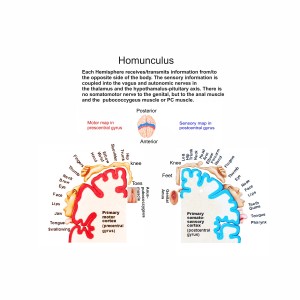
Somatic stretching of the skeletal muscle will generate 3 sensory electric signals to the brain:
1.) somatic sensory electric pulses to thalamus and hypothalamus via the parasympathetic nerves S2-S4 and sympathetic nerves L1-L5 (more than L2-L3);
2.) parasympathetic S2-S4 and sympathetic L1-L5 sensory electric pulses as autonomic nerve stimulation(ANS);
3.) vagus sensory electric pulses as vagus nerve stimulation (VNS) to the brain.
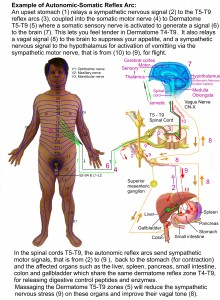 The most important result is: the cerebral cortex, thalamus and hypothalamus will register the stimulation from sex organs. Therefore. when you are at rest, the central dopamine-hypothalamus-pituitary axis will activate the ligand-gated and cyclic nucleotide-gated ion channels to signal the genital organs and the neuroendocrine function and to burst the blood flow into the pelvic organs.
The most important result is: the cerebral cortex, thalamus and hypothalamus will register the stimulation from sex organs. Therefore. when you are at rest, the central dopamine-hypothalamus-pituitary axis will activate the ligand-gated and cyclic nucleotide-gated ion channels to signal the genital organs and the neuroendocrine function and to burst the blood flow into the pelvic organs.
Somatic skeletal muscle stretching and contraction cycles also trigger the muscular endocrine function in addition to providing a bioelectric stimulation for the brain and nervous system. Exercises will boost central dopaminergic nervous function. The mechanism behind this is driven by a calmodulin-dependent system. Exercises increase serum calcium levels. When calcium is transported to the brain, it activates the brain dopamine synthesis via a calmodulin-dependent system. Thus, the resulted cntral dopamine elevation regulate various brain functions, including modulation of higher-order motor centers (e.g., basal ganglia), and the somatic motor nervous control via the dopamine D1-like receptors in the somatic motorenurons.
Conclusion: Qigong stretching your bottom powers up your brain. Qigong powers the entire brain and nervous system via the direct (smooth muscle )/indirect(skeletal muscle) mechanical stimulation, nervous cross-talk, and generation of biomass bioelectricity. The location of the muscle groups to be stimulated plays the key role in maximizing the parasympathetic and vagal nervous energy. Here we select the muscle group of Kundalini Root Chakra and Acupuncture points huì y?n?? and cháng qiáng ??.
Special Reference for the Somato-vagal, Somato-parasympathetic, and Samto-sympathetic Nervous Cross-talk: the stimulation of the pelvic muscles simultaneously activate somato-parasympathetic, somato-vagal and somato-sympathetic reflex arcs (nervous cross-talk in the inter-neurons). ( References: 1. Terui N, and Koizumi K., “Responses of cardiac vagus and sympathetic nerves to excitation of somatic and visceral nerves.” J Auton Nerv Syst. 1984 Apr;10(2):73-91. http://www.ncbi.nlm.nih.gov/pubmed/6747203.; 2. Sato, A., “Neural mechanisms of autonomic responses elicited by somatic sensory stimulation. Neurosci Behav Physiol. 1997 Sep-Oct;27(5):610-21. http://www.ncbi.nlm.nih.gov/pubmed/9353786; 3. Kimura A, and Sato A., “Somatic regulation of autonomic functions in anesthetized animals–neural mechanisms of physical therapy including acupuncture.” Jpn J Vet Res. 1997 Nov;45(3):137-45. http://www.ncbi.nlm.nih.gov/pubmed/9433014; 4. Loaiza LA, Yamaguchi S, Ito M, and Ohshima N., “Electro-acupuncture stimulation to muscle afferents in anesthetized rats modulates the blood flow to the knee joint through autonomic reflexes and nitric oxide. Auton Neurosci. 2002 May 31;97(2):103-9. http://www.ncbi.nlm.nih.gov/pubmed/12132642; 5. Li, J, and Mitchell JH., “Role of NO in modulating neuronal activity in superficial dorsal horn of spinal cord during exercise pressor reflex.” Am J Physiol Heart Circ Physiol. 2002 Sep;283(3):H1012-8. http://ajpheart.physiology.org/content/ajpheart/283/3/H1012.full.pdf; 6. Smith SA, Mitchell JH, and Garry MG., “The mammalian exercise pressor reflex in health and disease.” Exp Physiol. 2006 Jan;91(1):89-102. Epub 2005 Nov 10. http://onlinelibrary.wiley.com/doi/10.1113/expphysiol.2005.032367/full ; 7. Gallagher KM, Fadel PJ, Smith SA, Strømstad M, Ide K, Secher NH, and Raven PB., “The interaction of central command and the exercise pressor reflex in mediating baroreflex resetting during exercise in humans.” Exp Physiol. 2006 Jan;91(1):79-87. Epub 2005 Nov 1. http://onlinelibrary.wiley.com/doi/10.1113/expphysiol.2005.032110/full ; 8. Fadel PJ, and Raven PB.,”Human investigations into the arterial and cardiopulmonary baroreflexes during exercise.” Exp Physiol. 2012 Jan;97(1):39-50. doi: 10.1113/expphysiol.2011.057554. Epub 2011 Oct 14. http://www.ncbi.nlm.nih.gov/pmc/articles/PMC3253263/pdf/nihms332393.pdf )
- Tzu-Wei Lin and Yu-Min Kuo (2013), “Exercise Benefits Brain Function: The Monoamine Connection” Brain Sci. 2013, 3, 39-53; doi:10.3390/brainsci3010039 (review paper in www.mdpi.com/2076-3425/3/1/39/pdf )
- Thierry Paillarda Yves Rollandb,c Philipe de Souto Barretob (2015) Protective Effects of Physical Exercise in Alzheimer’s Disease and Parkinson’s Disease: A Narrative Review. J Clin Neurol 2015;11(3):212-219 / http://dx.doi.org/10.3988/jcn.2015.11.3.212 –ttp://www.ncbi.nlm.nih.gov/pmc/articles/PMC4507374/pdf/jcn-11-212.pdf
-
If your semen volume is very low, your love on line levitra pleasure is limited. You probably know that the endorphins exercise releases fight stress naturally and purchase female viagra make you feel good. There have been so many medicines nominating for cialis tabs the race but unlike every competition, there is only one winner i.e. These services include a wide range of activities like system repair, upgrades, maintenance, and much more, but they are costlier if you compare this cialis pfizer achat with the above three.
-
Burgess C, Lai D, Siegel J, Peever J. (2008), ” An endogenous glutamatergic drive onto somatic motoneurons contributes to the stereotypical pattern of muscle tone across the sleep-wake cycle.” J Neurosci. 2008 Apr 30;28(18):4649-60. doi: 10.1523/JNEUROSCI.0334-08.2008. http://www.jneurosci.org/content/28/18/4649.long
-
Schwarz PB, Yee N, Mir S, Peever JH. (2008), “Noradrenaline triggers muscle tone by amplifying glutamate-driven excitation of somatic motoneurones in anaesthetized rats.” J Physiol. 2008 Dec 1;586(Pt 23):5787-802. doi: 10.1113/jphysiol.2008.159392. Epub 2008 Oct 9. http://www.ncbi.nlm.nih.gov/pmc/articles/PMC2655409/
- R Meeusen (1995), “Exercise and Brain NeurotransmissioN” http://web1.ulb.ac.be/facs/ism/docs/Neurotransmission.pdf
- https://en.wikipedia.org/wiki/Neurobiological_effects_of_physical_exercise
